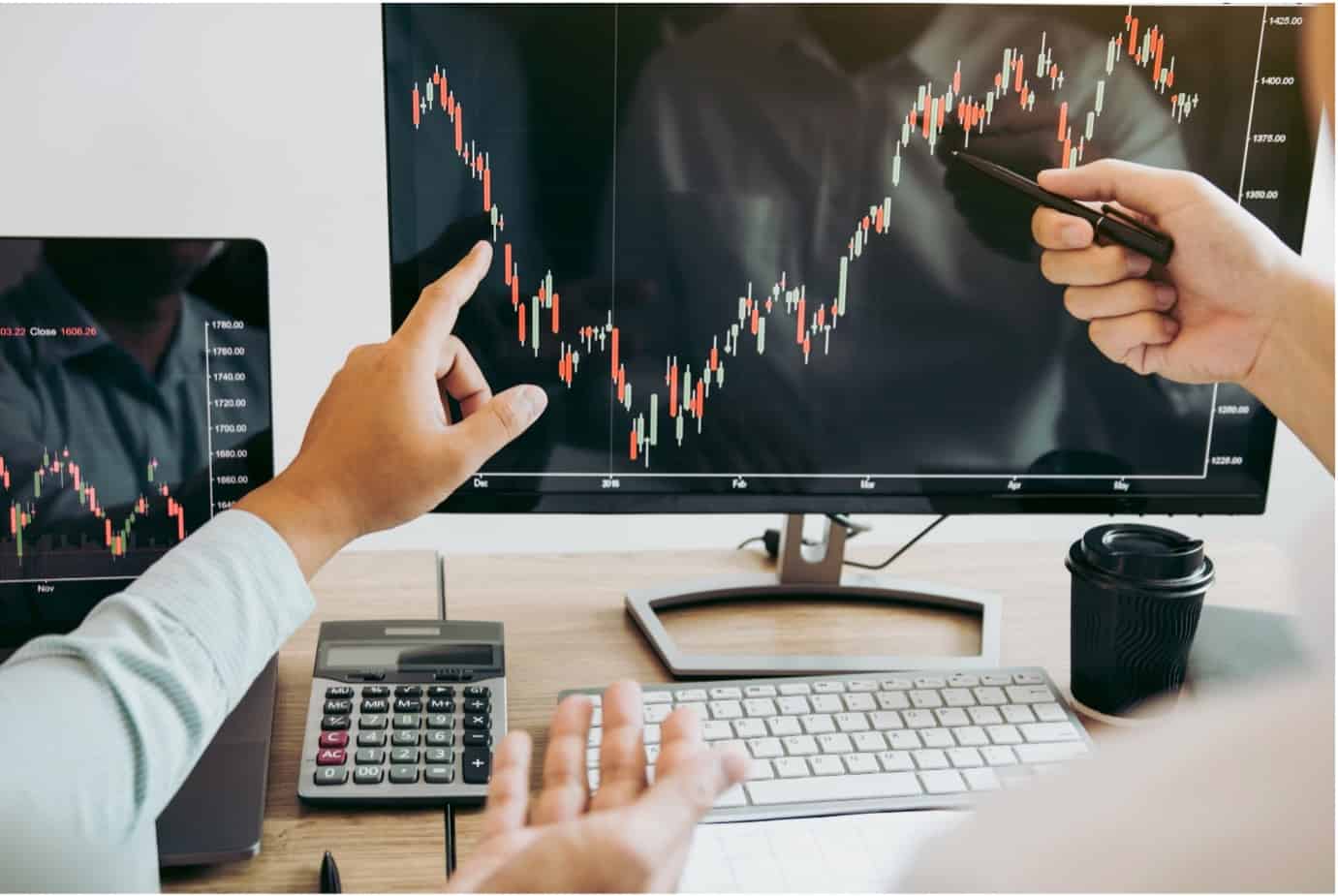Open A Forex Demo Account
There is no denying that forex trading is complex, and, unsurprisingly, many new traders lose money. It is vital to have a solid forex investment plan to guard against that, and you must stick with it, regardless of what your gut instinct might be telling you.
Having a detailed, written investment plan that you do not deviate from is vital to developing trading discipline, managing risk, and ultimately being successful with forex trading. This does not mean your plan can never change or evolve based on what you are learning and the experience you are gaining. However, it does mean that your plan should never change ‘on the fly’ during a busy trading day, based solely on your whims and emotions.

This article will teach you how to put together a forex investment plan that makes sense for you, including which factors to consider, what tools to use, and which pairs to trade. We will look at basic risk management strategies, such as using stop losses, and discuss how to incorporate technical and fundamental analysis into your overall investment plan. We will also take a quick look at how to choose the best forex broker to fit your trading objectives.
How much to invest in forex?
How much should you invest in forex trading? The first part of the answer is surprisingly simple. You should never invest more than you can afford to lose. There are no guarantees in forex trading, and many new forex traders make losses before they start to see a profit. So, it is generally advisable to start small, minimise losses, and spend some time learning the principles of sensible risk management.
When it comes to planning for trading forex in the longer term, you will find it helpful to analyse your trading performance over time. Knowing how much you made or lost is not as important as analysing why you made or lost that money. Many experts advise keeping a daily trading journal documenting your strategy. What buying and selling signals did you use? Were you copy trading? Did you use stop losses and profit targets? Which combination of technical indicators were you using, and did you incorporate fundamental analysis? All these things will help you analyse your performance and plan for the future.
Which currency pairs should I trade?
As part of your forex investment plan, you will have to decide which currency pairs you will focus on. Major currency pairs are the most frequently traded pairs and involve trading the US Dollar (USD) against another well-known and frequently traded currency
There are around 180 fiat currencies available, so there are a lot of pairs and variations to consider, but four of the most popular currency pairs to trade are:
- EUR/USD (Euro/US dollar)
- USD/JPY (US dollar/Japanese yen)
- GBP/USD (British pound/US dollar)
- USD/CHF (US dollar/Swiss franc)
You may also want to consider trading minor currency pairs, which involves trading pairs that still contain well-known currencies, but do not have the USD as part of the trade, such as EUR/GBP or CHF/JPY. Some traders also trade what are known as exotic currency pairs. It refers to buying and selling the currency of an emerging country or a smaller economy, which is not as frequently traded and may not be as liquid as other currencies.
They could include, for example:
- AUD/NOK (Australian Dollar/Norwegian Krone)
- AUD/PLN (Australian Dollar/Polish Zloty)
- CHF/SEK (Swiss Franc/Swedish Krona)
- CHF/SGD (Swiss Franc/Singapore Dollar)
- EUR/CZK (Euro/Czech Republic Koruna)
- EUR/HUF (Euro/Hungarian Forint)
Trading minor and exotic pairs is generally seen as a higher risk than sticking to major pairs, but there are still reasons you might wish to make these types of trades part of your overall forex investment plans. Perhaps you have specialist knowledge of a particular country and can track events in that region that might impact currency values. Exotic pairs can be quite volatile as they are sensitive to changes in US interest rates and the general risk appetite among forex traders.
Ultimately, which pairs you trade will be a personal choice, but the important thing is that it should be part of your investment plan, along with various other factors. Do not be tempted to start investing in pairs without researching the pros and cons, considering any additional risks and incorporating your new trading experiments into your overall plan.
Open A Forex Demo AccountTechnical and Fundamental Analysis
It is essential to incorporate market analysis when it comes to the different elements of your forex trading plan. Many forex traders rely on technical analysis to some extent, using one or more technical indicators to identify entry and exit points for their forex trades. How you use these indicators will be dictated by personal preference, but it is advisable to use more than one to confirm trends and avoid acting on false signals. Technical analysis can help you identify buy signals and sell signals, which enable traders to make profits and limit losses.

While most forex traders like their technical analysis tools and the reassurance that comes from following charts, trends, and patterns, it is also helpful to use fundamental analysis in your trading plan. That can involve looking at a country’s overall economy, inflation and interest rates, GDP, population changes, and opportunities for future economic growth. Looking at fundamentals allows traders to take a long-term approach by evaluating the current conditions and prospects of various countries to analyse the impact a country’s macroeconomics will have on its currency’s value.
Risk Management
Risk management strategies should focus on minimising losses because all traders, including those who make a good profit overall, place losing trades sometimes. The amount you risk per trade should always be a tiny amount of your total investable capital. Many experts advise no more than 2% of your available trading capital should be risked on a single trade. Even if you place a losing trade, a 2% loss per trade will allow you to lose 50 times in a row before your capital is gone, which is pretty unlikely if you are working to a well-thought-out investment plan.
Using stop losses is another essential risk management strategy. A stop-loss order limits your losses when an instrument you have invested in falls in value, so placing a stop-loss order can ensure that you exit a position once the value of an asset falls to a certain price. Alternatively, you can place stops to ensure a profit, choosing to exit a position when an asset hits a certain price point to limit the likelihood of holding the position too long and potentially making a loss when the price falls again. It is also possible to place a ‘trailing stop’, which adjusts automatically as an asset changes price. Trailing stops can protect gains by allowing a profitable trade to remain open until the price changes direction by a specified amount, at which point the position will be closed.
Open A Forex Demo AccountHow to Choose a Forex Broker
There are several things to look out for when choosing a forex broker, and if you already have a forex trade investment plan in place, it might help you to pick a broker that is well set up to help you meet your objectives. Generally, you will want to find a well-regulated and licensed broker that offers sufficient customer protection.
The account features of your broker must be suitable for the type of trading you want to perform. Check things such as the number and type of currency pairs offered, the risk management tools available, the technical indicators that are easily accessible, and the minimum deposit required. Not every broker offers every trading tool and feature, so try to assess brokers with your forex investment plans in mind to be sure they offer precisely what you need.
Take a look at the trading platform your broker uses. Is it intuitive and user-friendly? Does it make it easy to set stop losses and other limits, and is it compatible with all the tools, charts, and technical indicators you want to use? Does it offer social trading and mobile trading? Keep a list of all the features you need as you research the brokers you are considering.
Our top brokers:
| Broker | Features | Min Deposit | EURUSD Spread | ||
|---|---|---|---|---|---|
 Your capital is at risk
US Clients: No Regulated : Yes Your capital is at risk
US Clients: No Regulated : Yes
|
– Regulated by FSCA, IFSC and FSC |
$10 | ECN 0.1, Standard 1.6 | ||
 73% of retail CFD accounts lose money.
US Clients: No Regulated : Yes 73% of retail CFD accounts lose money.
US Clients: No Regulated : Yes
|
– Ultra-fast execution from 0.2s |
$100 | from 0.0 pips |
Sign
Up
Your capital is at risk
|
|
 Your capital is at risk
US Clients: No Regulated : Yes Your capital is at risk
US Clients: No Regulated : Yes
|
– Flexible leverage up to 500:1 |
$200 | From 0.1 | ||
 Your capital is at risk
US Clients: No Regulated : Yes Your capital is at risk
US Clients: No Regulated : Yes
|
– 40% New Member Bonus
|
$100 | Fixed |
Sign
Up
Europe* CFDs are complex instruments and come with a high risk of losing money rapidly due to leverage. 79% of retail investor accounts lose money when trading CFDs with this provider. You should consider whether you understand how CFDs work and whether you can afford to take the high risk of losing your money.
|
|
 81% of retail investor accounts lose money when trading CFDs with this provider. You should consider whether you can afford to take the high risk of losing your money.
US Clients: No Regulated : Yes 81% of retail investor accounts lose money when trading CFDs with this provider. You should consider whether you can afford to take the high risk of losing your money.
US Clients: No Regulated : Yes
|
– FCA (FRN 509909), ASIC, FMA, and FSCA Regulated. |
100GBP/AUD/EUR/USD | variable |
Sign
Up
81% of retail investor accounts lose money when trading CFDs with this provider. You should consider whether you can afford to take the high risk of losing your money.
|
|
 Between 74-89 % of retail investor accounts lose money when trading CFDs
US Clients: No Regulated : Yes Between 74-89 % of retail investor accounts lose money when trading CFDs
US Clients: No Regulated : Yes
|
|
$200 | NDD 0.09 / Standard 0.69 |
Sign
Up
Between 74-89 % of retail investor accounts lose money when trading CFDs
|
|
 76% of CFD traders lose money
US Clients: No Regulated : Yes 76% of CFD traders lose money
US Clients: No Regulated : Yes
|
|
$50 (varying by Country) | from 1 |
Sign
Up
76% of retail investor accounts lose money when trading CFDs with this provider. You should consider whether you understand how CFDs work, and whether you can afford to take the high risk of losing your money.
|
|
 Your capital is at risk
US Clients: No Regulated : Yes Your capital is at risk
US Clients: No Regulated : Yes
|
|
$5 | From 0.0 pips | ||
 Your capital is at risk
US Clients: No Regulated : Yes Your capital is at risk
US Clients: No Regulated : Yes
|
– CySEC, FCA, FSCA, SCB Regulated |
$100 | |||
|
|
|||||
Conclusion
Undoubtedly, those traders who put together detailed forex trading investment plans, and manage to stick to them, have a better chance of success in the long term. Well-thought-out forex investment plans are vital to limit losses and maximise profits. Those who have a plan tend to employ sound risk management and be less likely to make emotional trades or trades based on gut feelings. An investment plan can take a lot of the stress out of trading, as investors know they have tools in place to avoid significant and unexpected losses and to maximise their chances of making a profit.